The wine regions of France
Contrary to popular belief, France is not the first country in history to have produced wine. In -3000 BC the Georgians were already producing wine in the Black Sea... And it was the Greeks, around -600 BC who introduced vines to the Mediterranean coasts. Then, the Romans developed the cultivation of vines in the other wine-growing regions of France. Alsatian Riesling quickly became one of the favorite wines of the Romans, and the monks of Châteauneuf-du-Pape were fervent fans of Rhône wines.
France is also not always the leading wine producing country and regularly gives way to Italy over the years. And it is Spain which has the largest vineyard area with 975,000 hectares of vines.
However, France is recognized worldwide as the country of wine par excellence because it has a wealth of terroirs and grape varieties, a variety of soils and climates which give our wines their very particular characters.
Moreover, the word “terroir” belongs only to the French language. The establishment in 1936 of the AOC system protects the know-how of winegrowers in each region.
The Alsatian vineyard
Located on the Franco-German border in the far east of France between the Vosges massif and the Rhine plain, Alsace extends over a long corridor of 170 km going from Marlenheim in the north to Thann in the south. Alsace is a unique region in French wine-growing territory. Indeed, the wines are named by their grape variety, such as Gewurztraminer, Pinot noir, or even Riesling. And they are spread over only three protected designations of origin: Alsace, Alsace Grand Cru and Crémant d'Alsace.

The Beaujolais vineyard
An atypical vineyard in the French wine landscape, and today with more than 15,000 hectares of vines in production, Beaujolais is very different from its neighbor Burgundy. The limestone soils, so present in Burgundy, give way here to granite rocks where Gamay, the dominant grape variety of Beaujolais, reigns supreme. With a terroir in its own right marked very deeply by its history and traditions, Beaujolais wines have much more to offer than the much-publicized Beaujolais Nouveau. The region's winegrowers also produce, within the Beaujolais crus, complex and structured wines capable of aging for several years.
The Bordeaux vineyard
Bordeaux is the most famous vineyard in France. The vines established for 2,000 years on the Atlantic coast benefit from a temperate oceanic climate protected from violent winds by the Landes forest. Spread between the right and left banks of the Garonne, the vineyard extends over 119,000 hectares and brings together 60 appellations including the very famous Saint-Emilion, Margaux, Pauillac, Sauternes and Pessac-Léognan appellations. Made from Merlot, Cabernet Sauvignon and Cabernet Franc, Bordeaux wines are distributed throughout the world. Certain estates such as Château Haut-Brion (Pessac-Léognan), Lafite-Rothschild (Pauillac), Cheval Blanc (Saint-Emilion) and Château d'Yquem (Sauternes), are recognized as producing the greatest wines in the world.
The Burgundy vineyard
Modeled in the Middle Ages by the monks of the great abbeys, the Burgundy vineyard is one of the oldest in France. The extreme variety of its terroirs and the infinite diversity of its wines make Burgundy an exceptional terroir. It has always contributed to the image of excellence of French wine production. Chardonnay and Pinot noir are the flagship grape varieties of Burgundy. Planted all over the world, it is here, between Dijon and Mâcon, that they express their best potential. But the particularity of Burgundy does not stop there. Indeed, listed as a UNESCO World Heritage Site, the “climates” of Burgundy represent all the richness and complexity of the region. Characterized by a well-defined terroir ranging from a few acres to several hectares, the production is vinified according to a unique history and know-how shared by the winegrowers. There are around 1,500 climats in Burgundy. Some have even given their name to exceptional wines, known throughout the world: Montrachet, Romanée-Conti, Clos de Vougeot, Corton, Musigny, Chambertin.
The champagne
Ambassador of the excellence of French wine traditions, Champagne, the wine of kings, has today become the wine of all celebrations. With its joyful effervescence, its mysterious origins and its blends jealously guarded by each great house, Champagne has conquered the five continents. Unique and inimitable, often copied but never equalled, Champagne draws its qualities from a privileged terroir but above all it is the fruit of ancient know-how and formidable skills belonging to the Champenois. Champagne is a blended wine, each vintage can contain grapes from several plots and different vintages. So, let yourself be guided by your senses and enjoy the tasting.
Corsica
More than just an island, Corsica is a mountainous massif. It benefits from a Mediterranean climate tempered by the influences of the sea and the mountains, particularly favorable to the ripening of the grapes. The vines are planted all around the island in a narrow strip where the appropriate attitudes can be found. In Corsica, local and Italian grape varieties (Sciaccarello, Niellucci) rub shoulders with southern grape varieties (Grenache, Syrah) from the continent. This diversity offers a marked specificity and makes the wines produced on the island unique.
The vineyards of Languedoc and Roussillon
Languedoc-Roussillon is the region with the largest wine-growing area in France. Often combined, the regions of Languedoc and Roussillon are among the oldest wine-growing regions in France. They have unfortunately long suffered from an image of ordinary wines which today seems to be over. It produces reds, whites, sparkling wines but also natural sweet wines like Banyuls or Maury. It is also in Languedoc that we find the origin of the excitement with the famous Blanquette de Limoux. On the still wine side, the combination of Grenache, Syrah and Mourvèdre grape varieties is a very common blend, producing wines with structure, power, intense black fruit aromas and a beautiful dark color.
The Loire Valley vineyard
All along the river, says Royal, the vineyard spreads over a vast and extensive region where variations in relief, topology and climate are significant. Around the many Renaissance castles of the region, the vineyards of the Nantais region, Anjou, Saumurois, Touraine and the Center, harmonize to create refined wines with very different flavors and textures.
The Loire Valley vineyard
All along the Loire, known as the royal river, the vineyard spreads over a vast and extensive region where variations in relief, topology and climate are significant. Around the region's many Renaissance castles, the vineyards of the Nantais region, Anjou, Saumur, Touraine and the Center come together to create refined wines with very different flavors and textures. The Loire is mainly made up of small estates. However, its reputation is far from that of Bordeaux or Burgundy. It is therefore very easy to find good and great wines at very affordable prices, with a diversity and richness of style, which makes it one of the most attractive regions of France.
Provence
Provence is the French region that produces the most rosé wines. Around 170 million bottles of rosé (88% of the region's total production) are produced each year in Provence. But the Provençal vineyard is not limited to a single color, it also produces great red wines and quality whites. The three appellations, Côtes de Provence, Coteaux d'Aix-en-Provence and Coteaux Varois concentrate most of the wine production in Provence.
The Rhône vineyards
Located between Lyon and Marseille, surrounded to the west by the Massif Central, to the east by the Alps and to the south by the Mediterranean, the Rhône valley is the native land of the Syrah and Viognier grape varieties. Spread across six departments on either side of the river, the vineyards of the Rhône Valley are divided into two large groups of appellations. First of all, the northern vineyards in the North, from Vienne to Valence, are characterized by granite soils and steep hillsides with terraced vines. The red wines made only from Syrah are powerful, colorful and keep well. The distinctive and complex white wines are composed of Marsanne, Roussanne and Viognier. The northern vineyards include the Côtes-Rôtie, Condrieu, Saint-Joseph, Crozes-Hermitage and Cornas appellations. Then, the southern vineyards south of Montélimar in Avignon have a typically Mediterranean climate and constant sunshine. The soils are rich and diverse and the vines are located on both hillsides and plateaus. Around the prestigious Châteauneuf-du-Pape appellation, we find the Lirac, Vacqueyras, Gigondas and Ventoux appellations. The region has its origins in ancient Greek and Roman civilizations, and is today the second largest vineyard in France in terms of volume of AOC wine production after Bordeaux.
The Vineyards of Savoie and Jura
The Savoie vineyard is located in the heart of the departments of Savoie and Haute-Savoie, two departments best known for their eternal snow and their glaciers. Between lakes, mountains and rolling pastures, the Savoie vineyard is like its Jura counterpart located on hillsides between 300 and 600 meters above sea level. The multiple terrains and the great variety of grape varieties produce wines of all kinds: red, white and sparkling in three appellations: Roussette de Savoie, Seyssel and Vin de Savoie.
The vineyards of the South West
Located between the large regions of Languedoc and Roussillon and the prestigious Bordeaux region, the vineyards of the South-West cover a wide variety of terroirs, grape varieties and appellations. Since the Middle Ages, the wines of Cahors, Madiran and Gaillac have been highly appreciated at the court of the kings of France and their notoriety has spread throughout Europe. But the winegrowers of the South-West suffer from the jealousy of the powerful neighbor Bordeaux, denying them access to their port and the production struggles to be sold. The South-West is the most diverse region in France, where red, white, rosé and some natural sweet wines are produced. Behind the historic appellations, we find the Bergerac, Monbazillac and Jurançon appellations, well known to the general public.
Browse our catalog and let yourself be tempted by our unique and diverse selection of wines and champagnes of all types from small family productions and young, passionate winegrowers from the four corners of France.
-
 Free delivery
Free deliveryfrom 6 bottles
-
 Secure payment
Secure paymentvia 3DSecure
-
 Single sale
Single saleon all our wines
-
 Customer service
Customer servicefrom Monday to Friday




